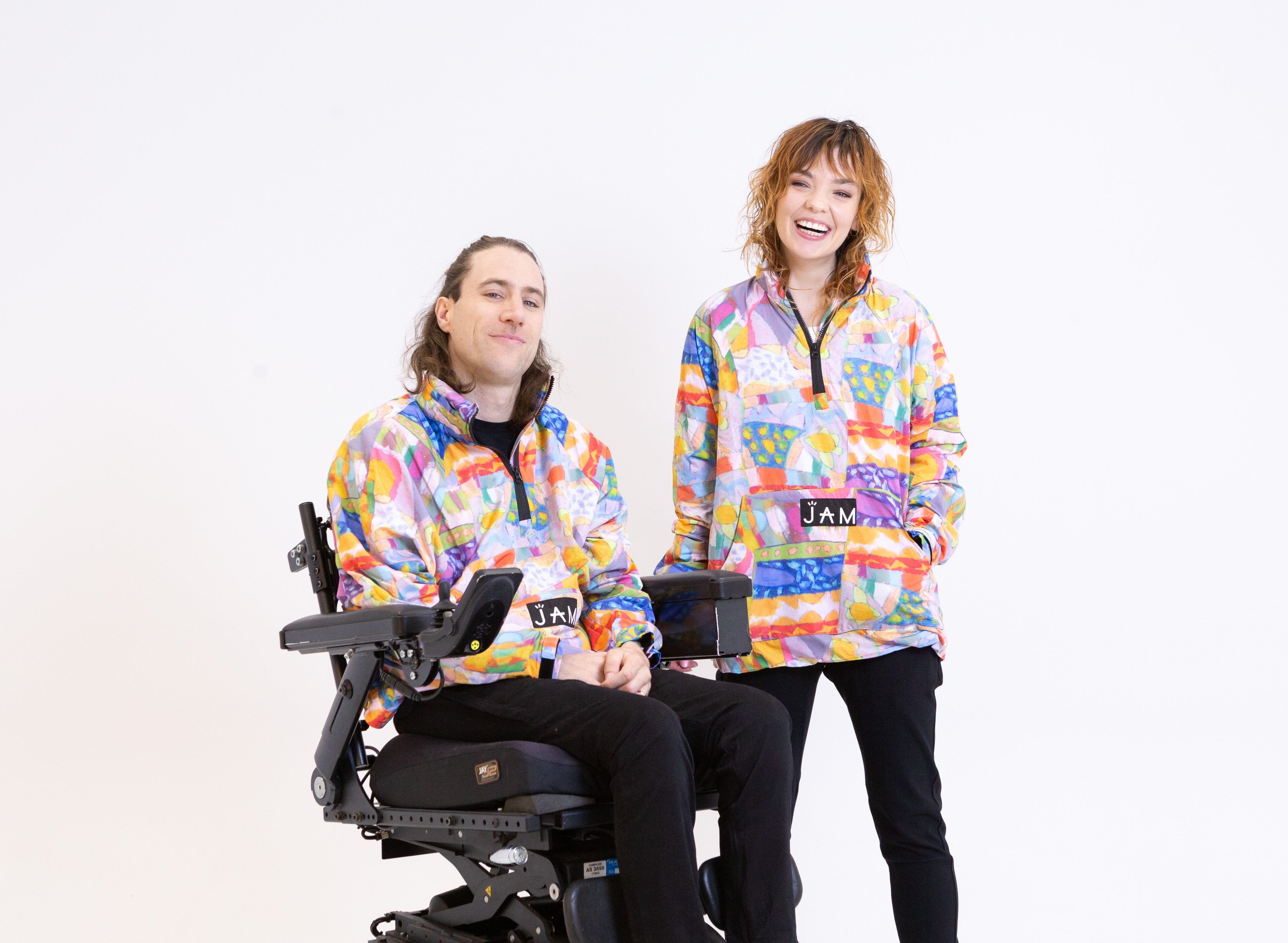Have you noticed that over the last 5 years since launching, JAM has gone between describing our products as inclusive, functional, accessible, adaptive and everything in between? Other than the fact we’re pretty indecisive and like to change things up, there’s a reason the terminology around our clothing isn’t always consistent.
Although Adaptive Clothing isn’t necessarily a new concept, in terms of it being a widely known term it has a long way to go. Therefore people have used lots of different terms to describe what they see. With JAM for example, we started in 2019 using the terminology Adaptive Clothing because that’s what made sense to us, and what big brands overseas like Tommy Hilfiger were using. However we then moved to Inclusive Clothing, as we felt that resonated well with our mission to include people with disability in the mainstream fashion industry and not create further seclusion from what already exists.
However, the word “inclusive” when used in fashion is synonymous with size diversity, and although JAM’s future goal is to be inclusive of as many people as possible (including broadening our sizing range), we didn’t want our community getting confused over the main purpose of our products or to feel as though we are not correctly representing ourselves.
So, after much debate, at JAM, we have finally settled back on being an Adaptive Clothing brand. Not only is this the term used globally to describe our category of clothing, and therefore most recognisable when customers are trying to find our products, but it also resonates with our origins. JAM is founded by two Occupational Therapists (OTs) and we thought of the idea whilst studying to become OTs. At the time we were being taught that if you can’t adapt the way a task is done, you adapt the environment or the equipment. In this case, the equipment was the clothing, hence Adaptive Clothing! This really resonates well with our Occupational Therapy roots which we love.
So, what exactly is Adaptive Clothing?
Adaptive Clothing encompasses garments designed with the needs of people with disability, injury or effects of ageing in mind. It's about more than just aesthetics; it's about functionality and ease of wear for those who face difficulties with traditional clothing options. From velcro closures to magnetic buttons, Adaptive Clothing integrates innovative design elements to make dressing and undressing easier, whether for wheelchair users, individuals with intellectual disability, those with sensory sensitivities, and many many more (we’ll come back to who exactly in a min).
One of the fundamental aspects of Adaptive Clothing is its versatility. These garments are crafted to adapt to the wearer's needs, whether it's adjustable waistbands, side openings for easy access, or seamless construction to minimise discomfort. For example, our High Waisted Pants that feature an elastic waistband and velcro strip for adjustability and comfort, but also have magnetic snaps in lieu of buttons and zips for greater access to things like continence aids or prosthetics.
Most importantly about JAM’s Adaptive Clothing is that it caters to such a wide range of individuals, not just those with physical disability. At JAM when we’re designing our products we consider those with sensory dressing needs such as a neurodivergent person who may find tags and seams irritating, people with intellectual disability who could find doing buttons or connecting zip-ends difficult, individuals who experience difficulty with fine motor movements such as those who have had a stroke or have limb difference who may struggle to use traditional clothing fasteners, wheelchair users that need to consider pressure points and the length of clothes in the seated position, and also those with chronic pain and fatigue such as someone with Fibromyalgia who could use up all of their energy supplies by taking 30 minutes to get dressed each day. As Occupational Therapists we have a deep understanding of how diverse disability is, therefore know our solutions need to be as well. Although we design specifically with these (and more) dressing needs in mind, because we utilise principles of universal design, anyone can wear Adaptive Clothing.
It’s important to remember though that Adaptive Clothing isn't just about meeting practical needs; it's also about empowering individuals to express themselves through fashion. At JAM we hold fashion and function in equal measure and ensure all of our products are considering the style of the end-wearer and whether they would feel proud to wear a JAM design. Traditionally Adaptive Clothing has been medicalised and purely focused on the functionality, which we just didn’t understand why this had to be the case. We don’t have to choose between fashion and function, so why should people with dressing needs? Fashion has the ability to transform the way you feel and interact with the world, it impacts your identity, self-esteem, motivation and your social interactions. So although some people may look at Adaptive Clothing and think what’s the big deal? The sometimes subtle adjustments can make a world of difference in promoting independence, dignity and confidence for a lot of people that are too-often stripped of this.
In recent years, the fashion industry has seen a significant shift towards inclusion and diversity, with more brands (mostly overseas) recognising the importance of Adaptive Clothing lines. This shift not only acknowledges the diverse needs of consumers but also reflects a growing understanding of the importance of accessibility in fashion. From major retailers to independent designers, there's a rapidly growing market for Adaptive Clothing that caters to various dressing needs and preferences.
However, despite the progress made with Adaptive Clothing, there's still much work to be done. Many individuals with disabilities continue to face barriers when it comes to finding clothing that meets their needs, whether due to limited availability or affordability. Moreover, there remains a need for greater awareness and education surrounding Adaptive Fashion to ensure that it becomes more mainstream and accessible to all.
Adaptive Clothing represents a transformative shift in the fashion landscape, one that prioritises inclusivity, functionality, and empowerment. By embracing diversity and designing with the needs of all individuals in mind, the fashion industry has the power to break down barriers and foster a more inclusive society where everyone can look and feel their best. As the movement towards adaptive fashion continues to gain momentum, let's celebrate the strides made thus far while advocating for a future where fashion truly knows no bounds. At JAM, we aim to be at the forefront of this movement and are committed to bringing mainstream attention to Adaptive Clothing in Australia.


